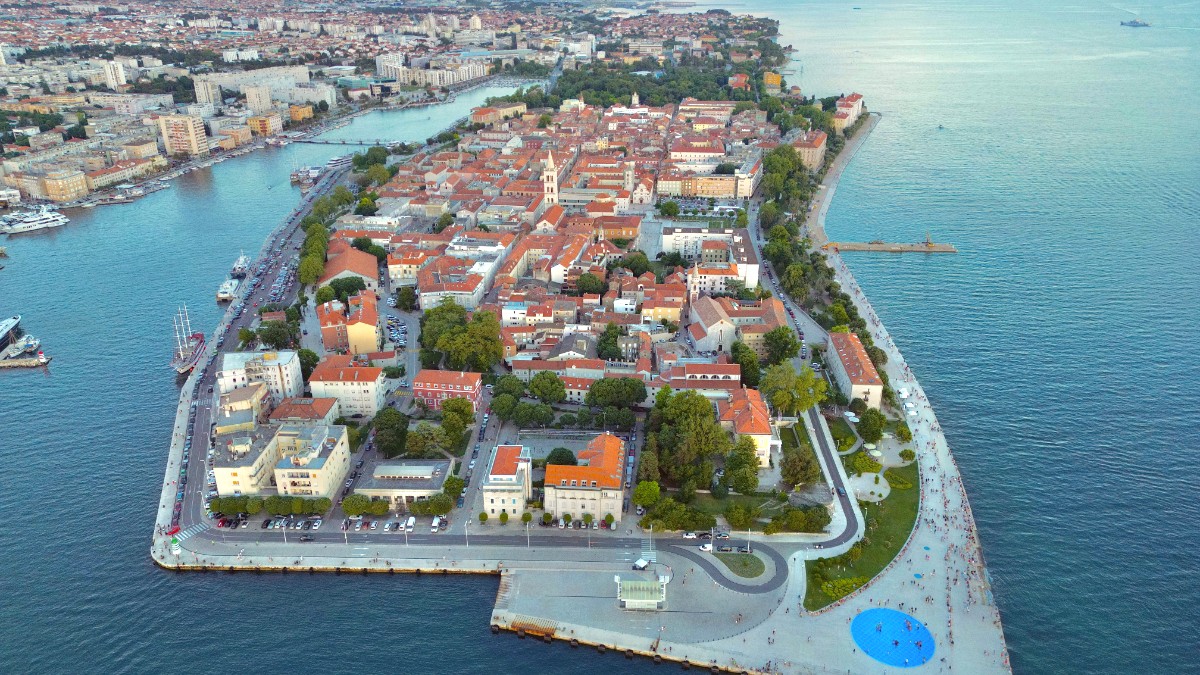
Dalmatia, Croatia
Zadar's cuisine builds on Dalmatian and Mediterranean traditions. It has influences from historical Venetian, Ottoman, and Austro-Hungarian rule, creating an unique gastronomic identity. The focus stays on simple preparations that highlight ingredient quality.
Fresh, seasonal ingredients from the Adriatic Sea and fertile hinterland are prominent.
Recommended for popular restaurants, especially during high season.
Lunch around 12 PM - 2 PM. Dinner from 7 PM onwards, often later in summer (8-10 PM).
Often served automatically, sometimes for a small charge. Politely decline if not wanted.
Lamb, veal, or octopus slow-cooked under a bell-shaped lid covered with hot embers. Rich and tender.
Often requires pre-ordering several hours in advance.
Traditional Dalmatian beef stew, slow-cooked in a rich, sweet-sour sauce. Served with homemade gnocchi.
Risotto made with squid ink, featuring a distinctive black color and a rich seafood flavor.
Flaky pastry filled with meat, cheese, or spinach. A quick, cheap bite.
Grilled minced meat sausages, served in flatbread with onions and ajvar.
Restaurants for exquisite seafood and elegant ambiances, often with beautiful views.
Numerous options offering traditional Dalmatian, Italian, and international dishes.
Quick and affordable meal options are available throughout Zadar.
Open daily in the mornings for fresh fruits, vegetables, local cheeses, and olive oil.
Zadar Fish Market (Ribarnica) is next door.
While Dalmatian cuisine dominates, Italian, some Asian, and other European restaurants are present in Zadar.
Restaurants along the Riva or with rooftop terraces.
Rustic taverns for authentic local dishes.
Learn Dalmatian cuisine, often with market visits.
Explore olive groves, vineyards, or cheese producers.
Awareness is growing. A translation card detailing your allergy in Croatian is helpful.
Grilled fish/meat, salads, and rice dishes may be safer.
Dedicated halal or kosher options are limited. Stick to vegetarian/vegan dishes or places that accommodate specific requests.
Fritule (deep-fried doughnuts), Kroštule (crispy fried pastries), Paški Sir (Pag Cheese), and Pršut (Dalmatian smoked ham).
Sardines are plentiful in summer. Wild asparagus is foraged in spring. Fresh figs are a summer delight.
Excellent seafood and elegant ambiance with a small harbor view.
An upscale seafood restaurant in the city center.
Offers traditional Dalmatian fare in a cozy setting.
Enjoy meals at restaurants along the Riva for stunning sunset views over the Adriatic.
A popular gathering spot for evenings.
Experience traditional meals and local products at agrotourism farms in the Zadar hinterland.
Offers insight into rural life and food production.
Many traditional dishes can be adapted, and dedicated vegetarian/vegan options are growing.
Consider carrying a Translation card for severe allergies.
Halal and Kosher options are generally limited in Zadar. Plan accordingly.
Tipping is usually 10% in sit-down restaurants if service is good. It is not mandatory, but appreciated. For casual cafes or bars, rounding up is common.